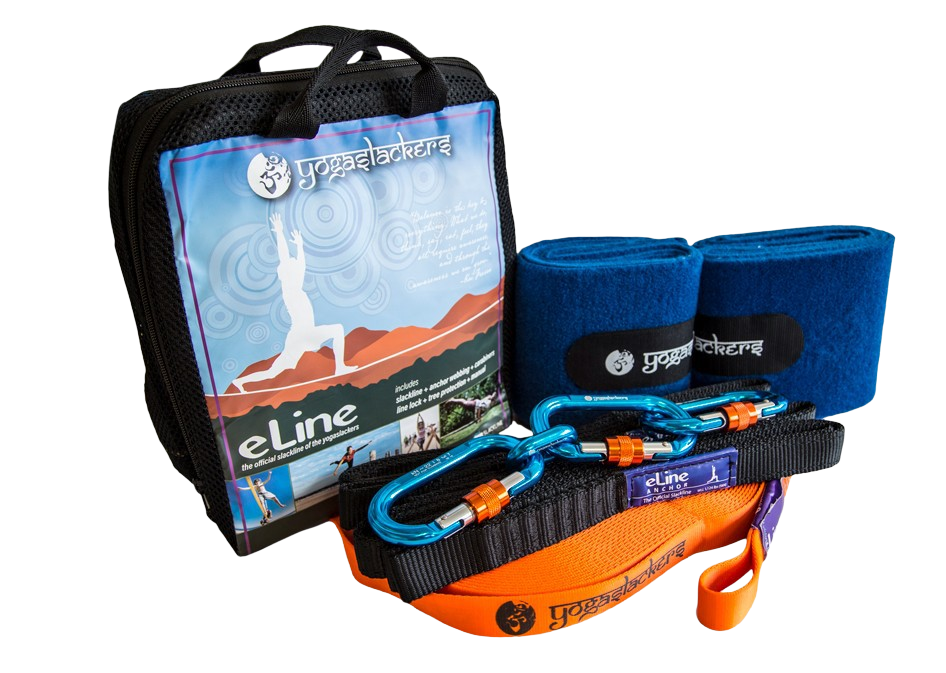Have you ever found yourself wanting to set up more slacklines than you have webbing for? With a longer slackline, and some additional gear, you can transform one piece of webbing into multiple slacklines. The feasibility of this trick depends on the length of your webbing and the distance between the trees available to you.
Imagine heading out for a slacklining session, and a friend joins you wanting to practice but doesn’t have their slackline. Or, perhaps you’re conducting a workshop with short lines and need to set up more lines than you have webbing for. Following this method will allow you to utilize the excess webbing at the end (the tail) to create additional lines.
You will need your slackline webbing plus these items per desired slackline setup.
Use this spread sheet to calculate your gear requirements.
For our example, where we set two lines using one piece of webbing with one shared tree, we will need:
Choose trees close enough so the webbing can span the distance. A handy method to ensure sufficient webbing is to lay it loosely on the ground, tracing the intended slacklines’ path. Don’t forget to allocate extra webbing for tensioning.
If your lines are similar in length and height, you can share the tree protection. In our example, we’ll use three pieces for two similarly-heighted lines.
Both the starting and ending trees require one anchor each, while the middle tree needs two. Attach a carabiner to each anchor. You could save on gear by girth-hitching the slackline webbing around the first tree, but this limits available webbing for tensioning and later practice.
Establish the initial slackline using the standard primitive system. Be conservative with the tensioning to avoid using excess webbing. Pre-set and re-tension the line—using methods like walking or kneeling on it—to help the webbing settle. Remove any slack before proceeding.
You can repeat this process as long as your webbing and gear allow. While this method is especially useful with the 108-foot e-line slackline, it’s also suitable for a 50-foot variant or other lengthy webbings.
We hope this guide is beneficial! Tricks like this add fun and optimize the gear we have. Slacklining isn’t only about balance—it’s about innovation and creativity too.
Don’t forget to check out the accompanying video for this guide. For questions or feedback, please comment on the video. Your insights drive our passion. Happy slacklining!

Our complete collection of slackline gear, thoughtfully designed for all skill levels.